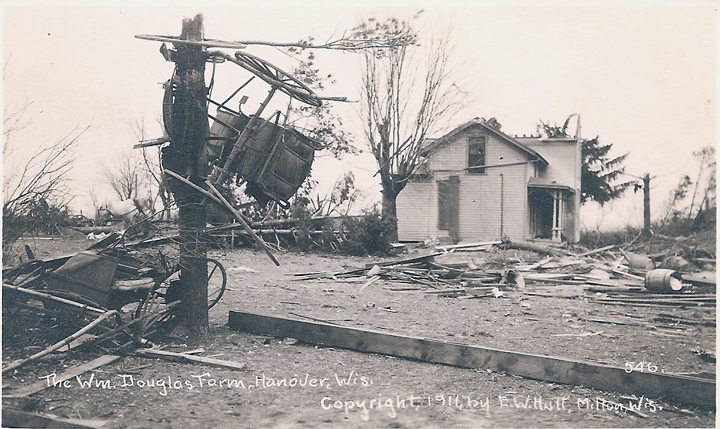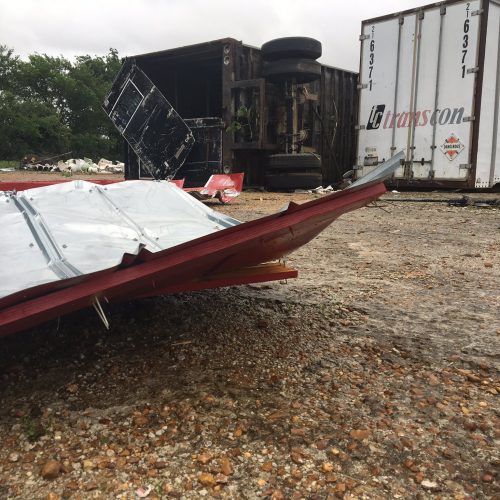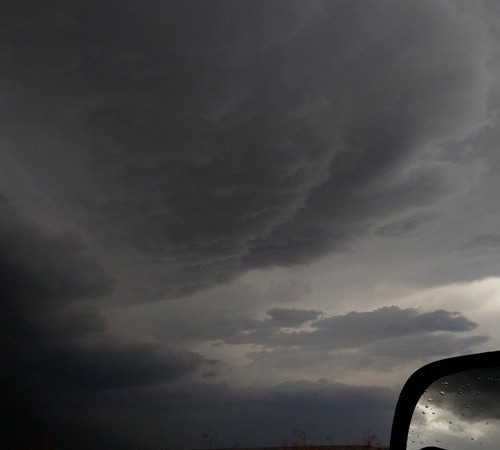We’re about to turn the calendar on April, when media promote tornado awareness. Generally, Wisconsin’s tornado season runs April through September. The most twisters strike May through July, according to state data and a story reporter Andrea Anderson wrote for The Gazette.
Residents of the plains states were happy to escape without devastating tornadoes as a massive weather system passed through our country’s midsection this week.
This week also marked the five-year anniversary of a three-day weather pattern that slammed 21 states in 2011 and spawned hundreds of twisters, killing more than 300 people. The National Weather Service says it was the largest tornado outbreak in recorded U.S. history.
I was researching tornadoes this month for a short editorial encouraging people to heed weather warnings and sirens when I stumbled across a website that surprised me. It lists the “10 deadliest tornadoes” in Wisconsin from 1844 to 2010, and Rock County was listed as tying for 10th spot with a storm that killed nine people and injured 10.
The most striking fact: That 1911 twister didn’t strike during the usual “tornado season” but Nov. 11.
Gazette columnist Anna Marie Lux wrote about that tornado five years ago to mark the storm’s 100th anniversary. I didn’t remember that story until folks at the Rock County Historical Society pointed it out.
Newspaper accounts say the twister cut a 34-mile path of destruction. As Lux explained, it started near Brodhead, ripped through Hanover, turned north on Janesville’s western outskirts and swept between Milton and Milton Junction. One man reported the sky was so black he couldn’t see his hands as he held the reins of his spooked horse.
An oft-reprinted photograph showed two buggies on the Douglas farm, west of Janesville, wrapped around a tree like wooden ribbons.
Four members of Anton Schmid’s family—a name spelled Schmitt and Schmidt in various accounts—died at their farm, across Ellis Road from the Douglas place.
Margie Douglas Boylen of Janesville is granddaughter of Ellis Douglas, who survived as a 10-year-old while huddling in the cellar with his parents. Boylen started researching the storm after seeing a photo of the Douglas farm featured in an earlier newspaper account. Two of Ellis’ sisters huddled in an upstairs corner of the farmhouse as the storm ripped away the roof. Another sister ran outside and was lucky to survive flying debris.
Boylen told Lux what she learned about the Schmid victims.
“The father was sucked out of the haymow head first,” she said. “Two daughters were blown out of the house and buried in the ground. The barn fell on the boy. A tramp inside the barn was able to free himself from the rubble. When he stepped outside, he couldn’t get his bearings because there was so much debris.”
That storm struck on a Saturday afternoon. Had it hit on a weekday, the death toll likely would have been higher because the tornado destroyed three one-room schoolhouses.
Early that day, temperatures soared to record highs in the 70s. Within an hour of the storm’s passing, they had fallen to near zero.
With winter bearing down, many families were left without homes or shelter for surviving livestock. But newspaper accounts tell how other residents responded, starting a relief fund to provide survivors with money, clothing, bedding shoes and food.
As I wrote earlier this month, never ignore tornado warnings. That 1911 storm shows Rock County is susceptible, just like every other county in the Midwest.
Greg Peck
Friday, April 29, 2016




